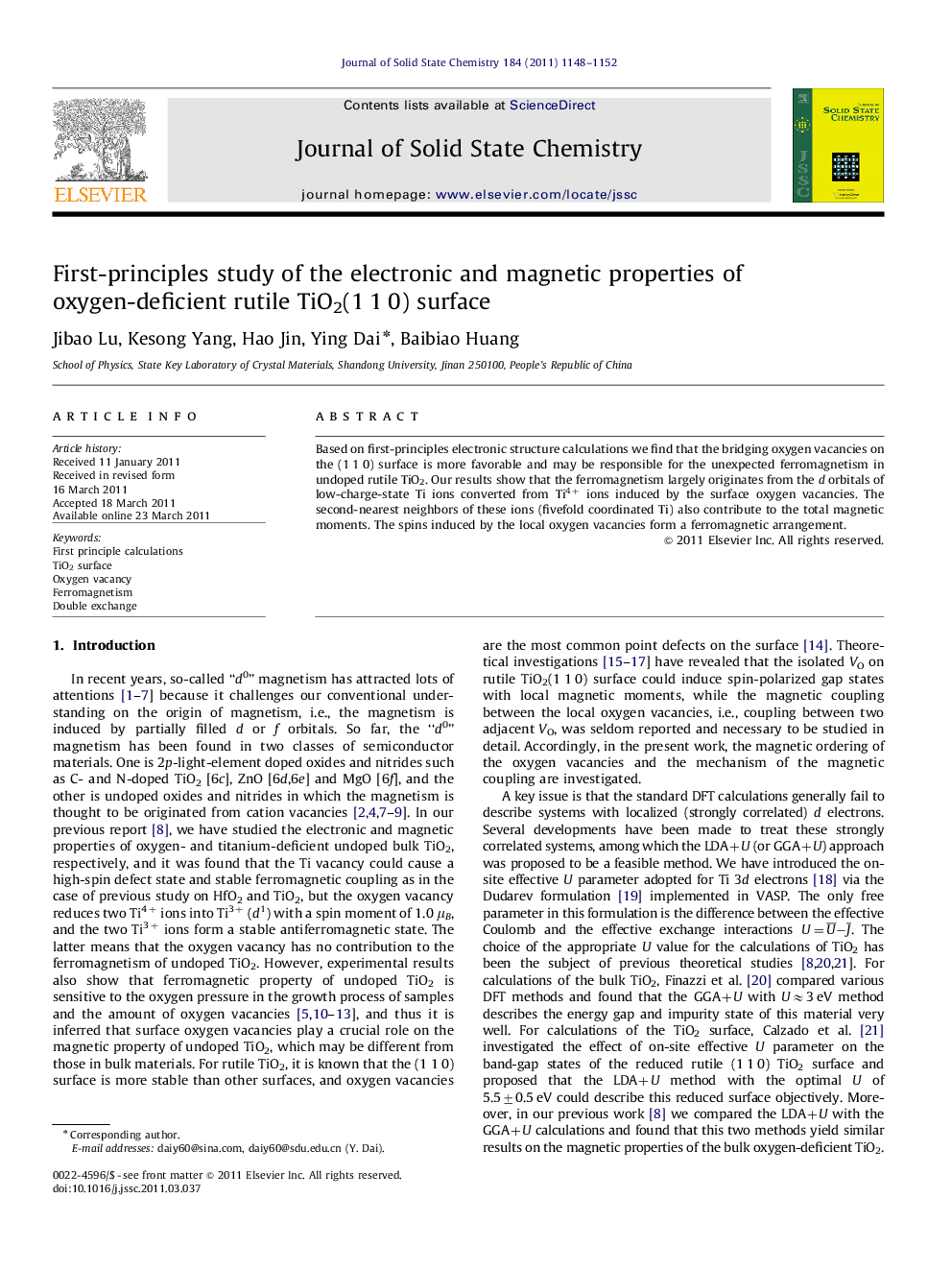| کد مقاله | کد نشریه | سال انتشار | مقاله انگلیسی | نسخه تمام متن |
|---|---|---|---|---|
| 1330828 | 978978 | 2011 | 5 صفحه PDF | دانلود رایگان |

Based on first-principles electronic structure calculations we find that the bridging oxygen vacancies on the (1 1 0) surface is more favorable and may be responsible for the unexpected ferromagnetism in undoped rutile TiO2. Our results show that the ferromagnetism largely originates from the d orbitals of low-charge-state Ti ions converted from Ti4+ ions induced by the surface oxygen vacancies. The second-nearest neighbors of these ions (fivefold coordinated Ti) also contribute to the total magnetic moments. The spins induced by the local oxygen vacancies form a ferromagnetic arrangement.
Graphical AbstractThe study investigates the magnetic properties of the oxygen-deficient rutile TiO2(1 1 0) surface from first principle calculations. The adjacent oxygen vacancies form a ferromagnetic arrangement due to the double exchange interaction.Figure optionsDownload as PowerPoint slideHighlights
► There should be more VO’s than VTi’s on the (1 1 0) surface layer of TiO2.
► Magnetic moments induced by the isolated VO form a paramagnetic arrangement.
► Magnetic moments induced by the concentrated VO’s form a ferromagnetic arrangement.
► Double exchange is the dominant coupling mechanism of the ferromagnetism.
Journal: Journal of Solid State Chemistry - Volume 184, Issue 5, May 2011, Pages 1148–1152